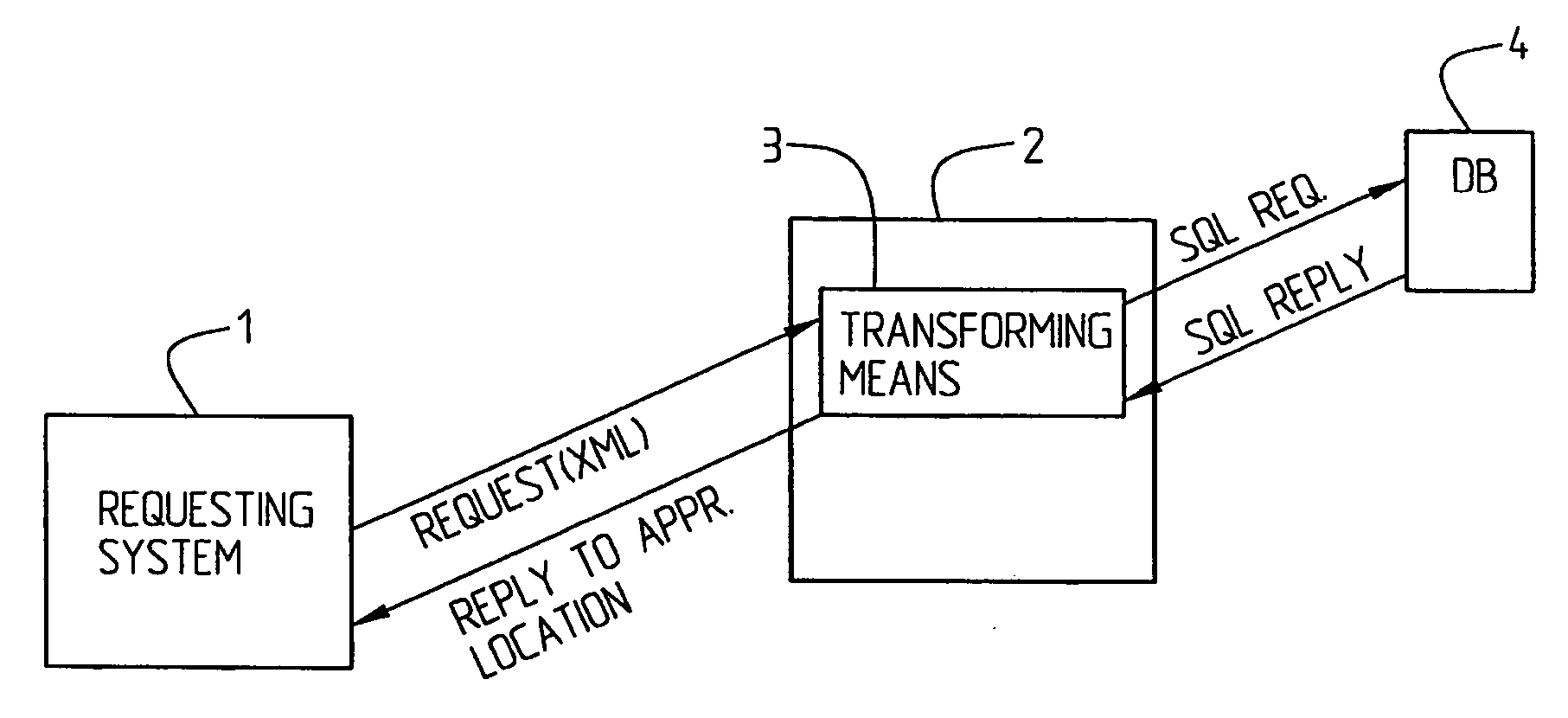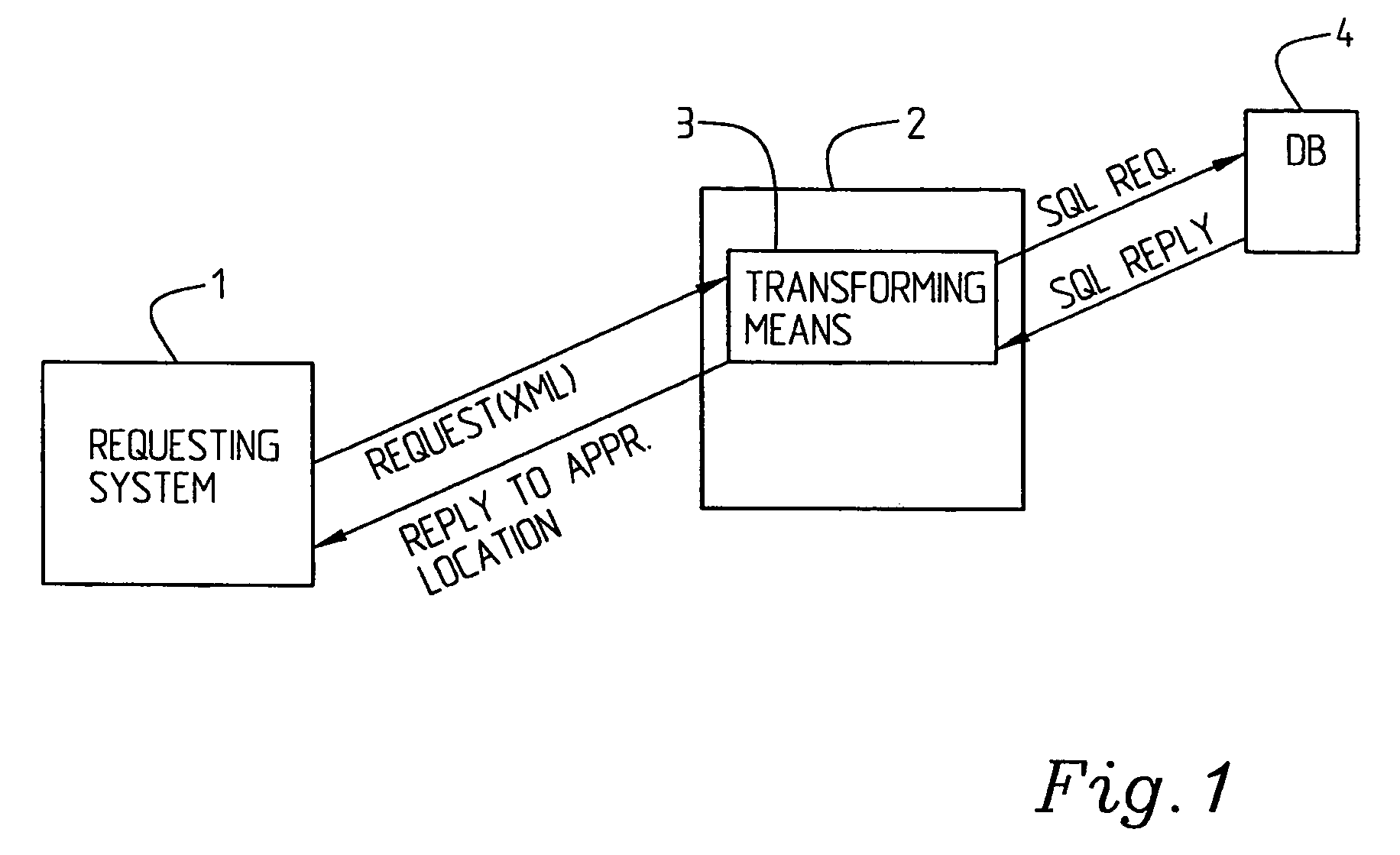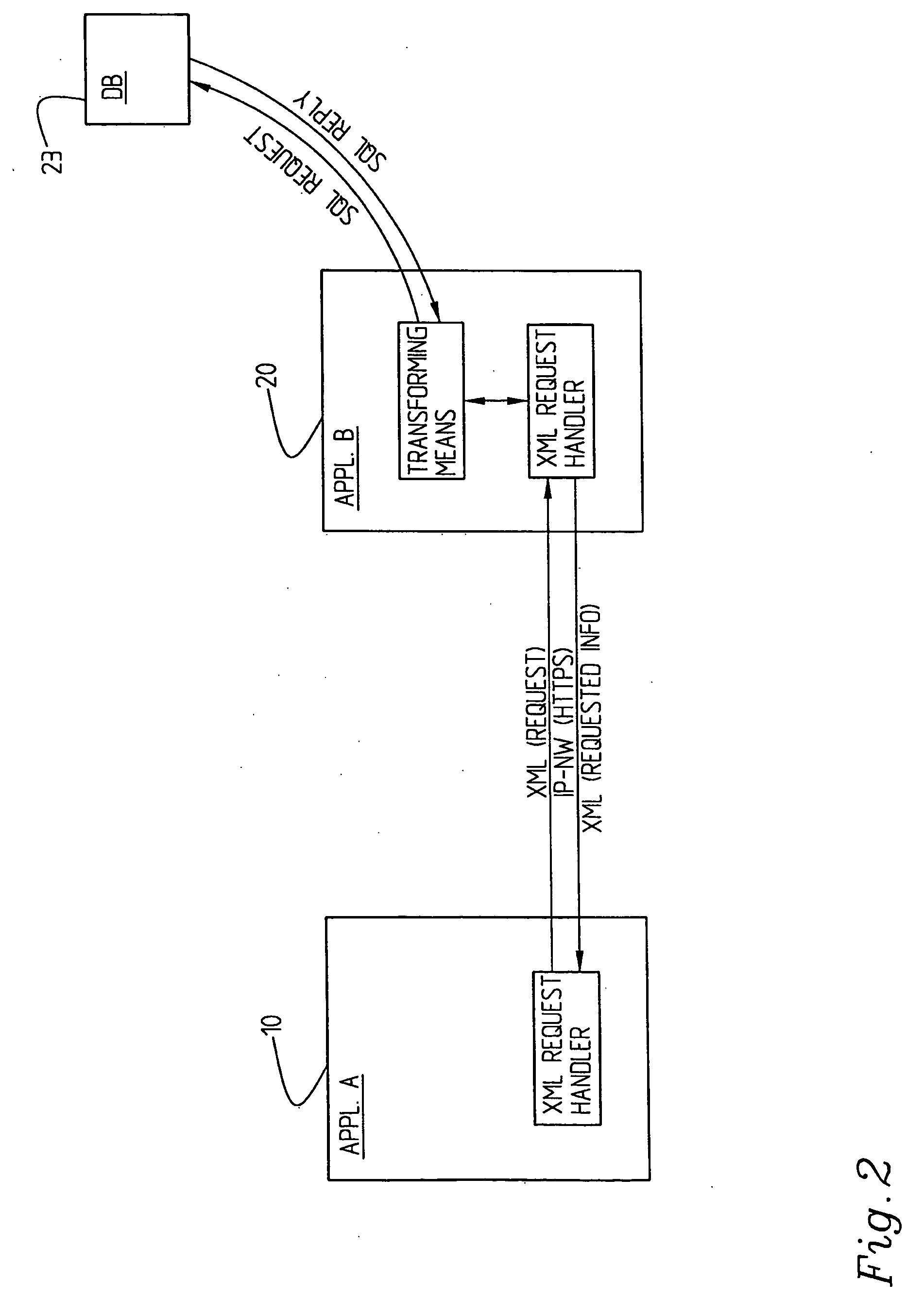System and method relating to access of information
a technology of information access and system, applied in the field of system and method relating to information access, can solve the problems of using dynamic input parameters, and not being able to satisfactorily function, etc., and achieve the effect of satisfying the needs of an end user, not being able to dynamically, and being able to adapt to the needs of known systems
- Summary
- Abstract
- Description
- Claims
- Application Information
AI Technical Summary
Benefits of technology
Problems solved by technology
Method used
Image
Examples
Embodiment Construction
[0019] First, a few concepts used in this description will be briefly explained. A requesting system may here be seen as a requesting and / or a providing application.
[0020] In a most advantageous implementation the generic markup language is XML (Extensible Markup Language). An agreement between two parties particularly comprises a DTD (Document Type Definition) and it will in the following be referred to as a DTD agreement, i.e. an agreement specifying which data or what kind of data being allowed to exchange between the two parties. A form can particularly be used for requesting purposes, which form may comprise an XML (node) tree tagged with information about data to be “set” or “get”, and the requested data itself, if applicable.
[0021] A DTD describes a model of the structure of the content in an XML document. The model specifies the elements which have to be provided, which elements that are optional, which their attributes are and how they could be structured in relation to e...
PUM
 Login to View More
Login to View More Abstract
Description
Claims
Application Information
 Login to View More
Login to View More - R&D
- Intellectual Property
- Life Sciences
- Materials
- Tech Scout
- Unparalleled Data Quality
- Higher Quality Content
- 60% Fewer Hallucinations
Browse by: Latest US Patents, China's latest patents, Technical Efficacy Thesaurus, Application Domain, Technology Topic, Popular Technical Reports.
© 2025 PatSnap. All rights reserved.Legal|Privacy policy|Modern Slavery Act Transparency Statement|Sitemap|About US| Contact US: help@patsnap.com



